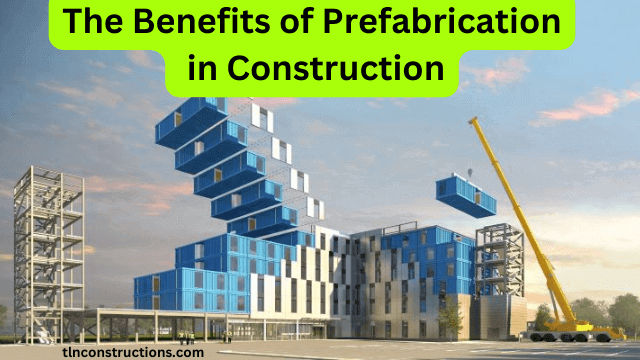Are you tired of lengthy and costly construction projects? Do you want to reduce waste and increase efficiency in your construction projects? Then look no further than prefabrication!
Prefabrication is a modern approach to construction that involves the fabrication of building components off-site, in a controlled environment, and then assembling them on-site. This method of construction has gained immense popularity due to its numerous advantages, including cost-effectiveness, speed, and sustainability.
Introduction: Understanding Prefabrication in Construction
Prefabrication involves the manufacturing of components or modules of a building in a controlled environment away from the construction site. These components are then transported to the construction site and assembled on-site. This process can include anything from prefabricated walls to entire floors, ceilings, and roofs.
Prefabrication has been around for centuries, but it has gained popularity in the construction industry over the last few decades. The construction industry has been seeking ways to improve efficiency, reduce waste, and control costs. Prefabrication is one of the answers to these problems.
The Benefits of Prefabrication in Construction
Prefabrication offers numerous benefits for the construction industry. Here are some of the most notable advantages:
- Cost Savings: Prefabrication can save costs by reducing waste, minimizing the amount of materials required, and improving productivity. This results in fewer construction hours, less equipment, and lower labor costs.
- Speed of Construction: Prefabrication can speed up the construction process by up to 50%. This is because the components are manufactured off-site, meaning there are fewer interruptions, and the components are assembled quickly once they arrive at the construction site.
- Improved Quality: Prefabrication is conducted in a controlled environment, meaning that the components are manufactured to a high standard, with fewer defects. This ensures the overall quality of the building is improved.
- Sustainability: Prefabrication can help reduce construction waste by optimizing the use of materials and reducing the amount of waste produced. This can lead to a more sustainable building process.
- Flexibility: Prefabrication allows for greater flexibility in design and customization. The components can be designed to fit the specific requirements of the project, allowing for a high level of customization.
- Safety: Prefabrication is conducted in a controlled environment, ensuring a safer working environment for workers. It also reduces the risk of accidents and injuries on the construction site.
How Does Prefabrication Work?
Prefabrication involves a few key steps:
- Design and Planning: The design and planning stage involves identifying the components that will be prefabricated and designing them to meet the specific requirements of the project.
- Manufacturing: The components are manufactured off-site in a controlled environment. This involves cutting, shaping, and assembling the various parts.
- Transportation: The prefabricated components are then transported to the construction site.
- Installation: The components are then assembled on-site, which involves connecting them to each other and to the rest of the building.
FAQ: Common Questions About Prefabrication in Construction
- Is prefabrication more expensive than traditional construction methods? Prefabrication can be more cost-effective than traditional construction methods, as it reduces waste and improves efficiency.
- Is prefabrication suitable for all types of buildings? Prefabrication is suitable for a wide range of building types, including residential, commercial, and industrial buildings.
- Can prefabrication be used for building renovations? Yes, prefabrication can be used for building renovations, as it allows for greater flexibility in design and customization.
- Is prefabrication suitable for complex building designs? Yes, prefabrication can be used for complex building designs, as it allows for greater precision and customization.
- What are the environmental benefits of prefabrication? Prefabrication reduces waste and minimizes the use of resources, making it a more sustainable building process.
- Can prefabrication improve safety on construction sites? Yes, prefabrication can improve safety on construction sites by reducing the amount of work that needs to be done on-site, resulting in fewer hazards and a safer working environment.
Conclusion: Embracing the Benefits of Prefabrication in Construction
In conclusion, prefabrication is an innovative solution to the challenges facing the construction industry. It offers numerous benefits, including cost savings, speed of construction, improved quality, sustainability, flexibility, and safety. The future of construction lies in embracing the potential of prefabrication.
As the construction industry evolves, more and more companies are turning to prefabrication as a way to streamline their operations, reduce waste, and increase efficiency. With its numerous advantages, prefabrication is poised to become an essential component of modern construction.
So, if you want to optimize your construction process and improve your bottom line, consider the benefits of prefabrication in construction.
